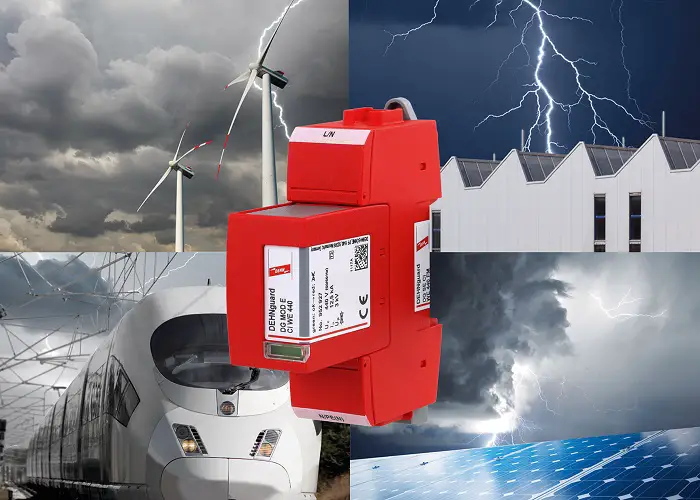Lightning strikes to renewable energy equipment on wind or solar farms, or rooftop solar panels, will cause damage at the strike point, as well as lightning surge damage to any equipment that is connected downstream.
While external lightning protection helps avoid damage at the strike point itself, surge protection devices help prevent downstream damage because of conducted and induced surges from the strike, while further allowing the renewable energy system to stay online.
Julienne Puttkammer, who is part of the Technical Team at DEHN AFRICA, the local subsidiary of DEHN, a globally active electro technical company offering comprehensive services, products and solutions in the field of surge protection, lightning protection and safety equipment, says the company has concentrated most of its work in the renewables space to date on rooftop photovoltaic (PV) systems.
Rooftop PV installations in South Africa are booming
He says, “Rooftop PV installations in South Africa are booming – we have been involved in a number of commercial rooftop PV projects, and find them being installed in places like shopping malls and other office buildings. For example, some companies will install PV panels on the sun shades that protect cars in car parks, as well as directly on the building roof itself. These commercial entities are looking at PV installations from a long-term perspective, knowing that it makes economic sense over time to supplement their electricity requirements through self-generation.
“As regards commercial rooftop PV installations, we find the highest lightning strike risk in Mpumalanga, followed by Gauteng and then Kwa-Zulu Natal. The owners of Cape Town commercial PV installations tend to be more concerned with surge protection than with lightning risks, while Gauteng owners are typically focused on both.”
Puttkammer explains that DEHN AFRICA has seen an increase in awareness over the past two years or so around the importance of surge and lightning strike protection for rooftop PV systems, as more people have learned how to implement them. He adds that DEHN AFRICA is also making its mark in the ground-mounted PV plants.
He clarifies, “With respect to solar farms, we found that we were initially called in largely for retro-fitting and now, having been involved in a number of projects, we are increasingly being called in at the design stage of a new round of renewable energy projects, which is obviously more desirable from a technical standpoint.
“In comparison, wind farm equipment is largely pre-made in Europe and then brought in to South Africa to assemble. It has lightning and surge protection already included or pre-specified, although we do some work on the earthing requirements for each local placement of the wind turbine.”
Surge and lightning protection systems
The retro-fitting of surge and lightning protection systems of some solar farms is often due to attempts at cost saving, he maintains. “There is often a perception that direct lightning strikes to a PV plant are negligible, and thus the lightning strike damage risk is low enough to leave from consideration. However, the sheer size of a solar farm – it can have a footprint of more than two square kilometres – coupled with multiple strikes per square kilometre each year in the area, makes it more likely that it will be struck by lightning or influenced by nearby strikes.”
Incorrect installations of surge protection and lightning protection
However, Puttkammer says there is a misconception that rooftop solar installations actually attract lightning strikes. “But while they may not directly draw lightning, they are still exposed to lightning risk and this therefore has to be dealt with. We’ve also come across incorrect installations of surge protection and lightning protection in general, with incorrect procedures occurring during installation giving rise to problems later. There is a strong need for more knowledge and technical expertise in application, and it is crucial to talk to lightning experts. Surge protection makes no difference if it hasn’t been carried out correctly.”
Finally, Puttkammer notes some unique challenges for solar farm’s lightning and surge protection in South Africa as compared to Europe. “Soil conditions are very rocky here, and so ingenuity is required when implementing some of the lightning protection standards. This is again where DEHN AFRICA’s expertise comes in,” he concludes.

Leave a Reply